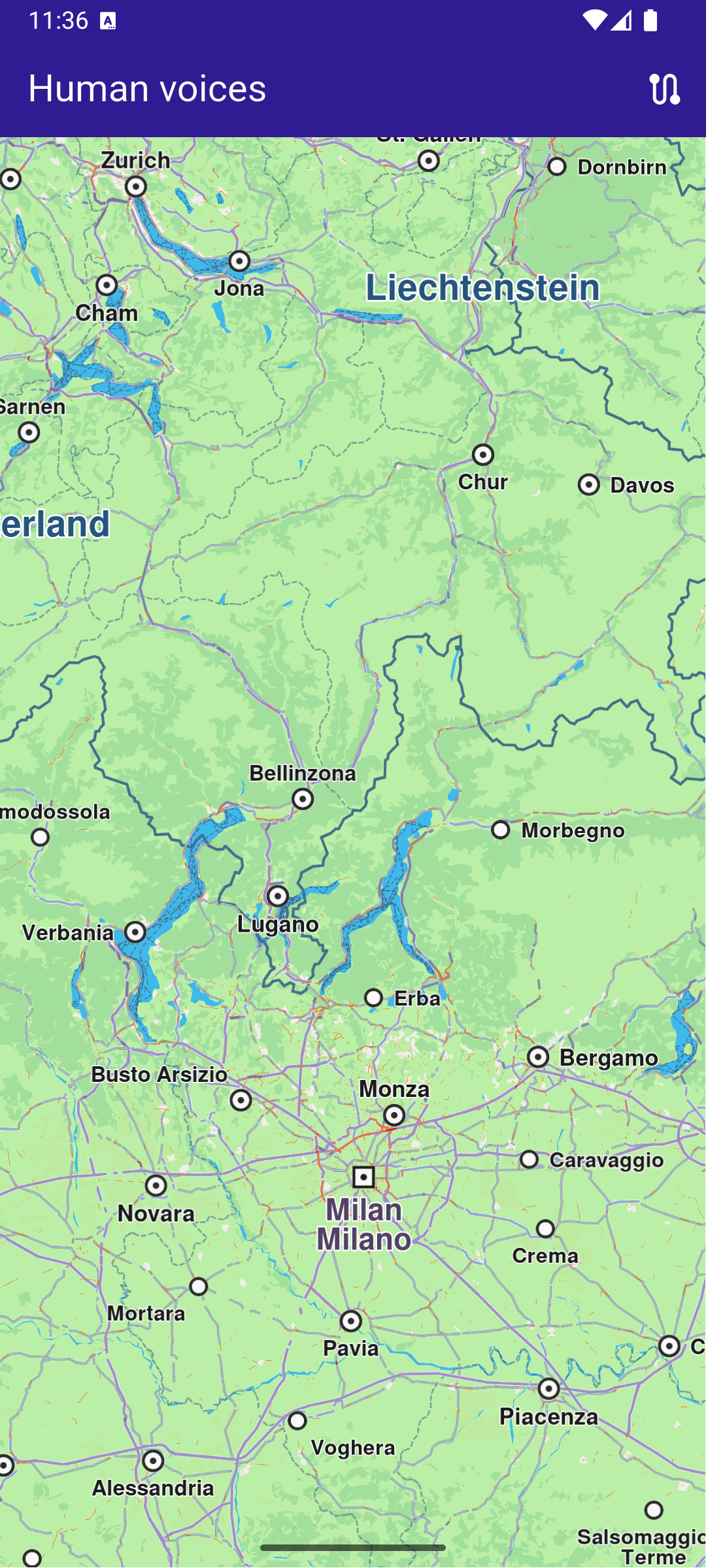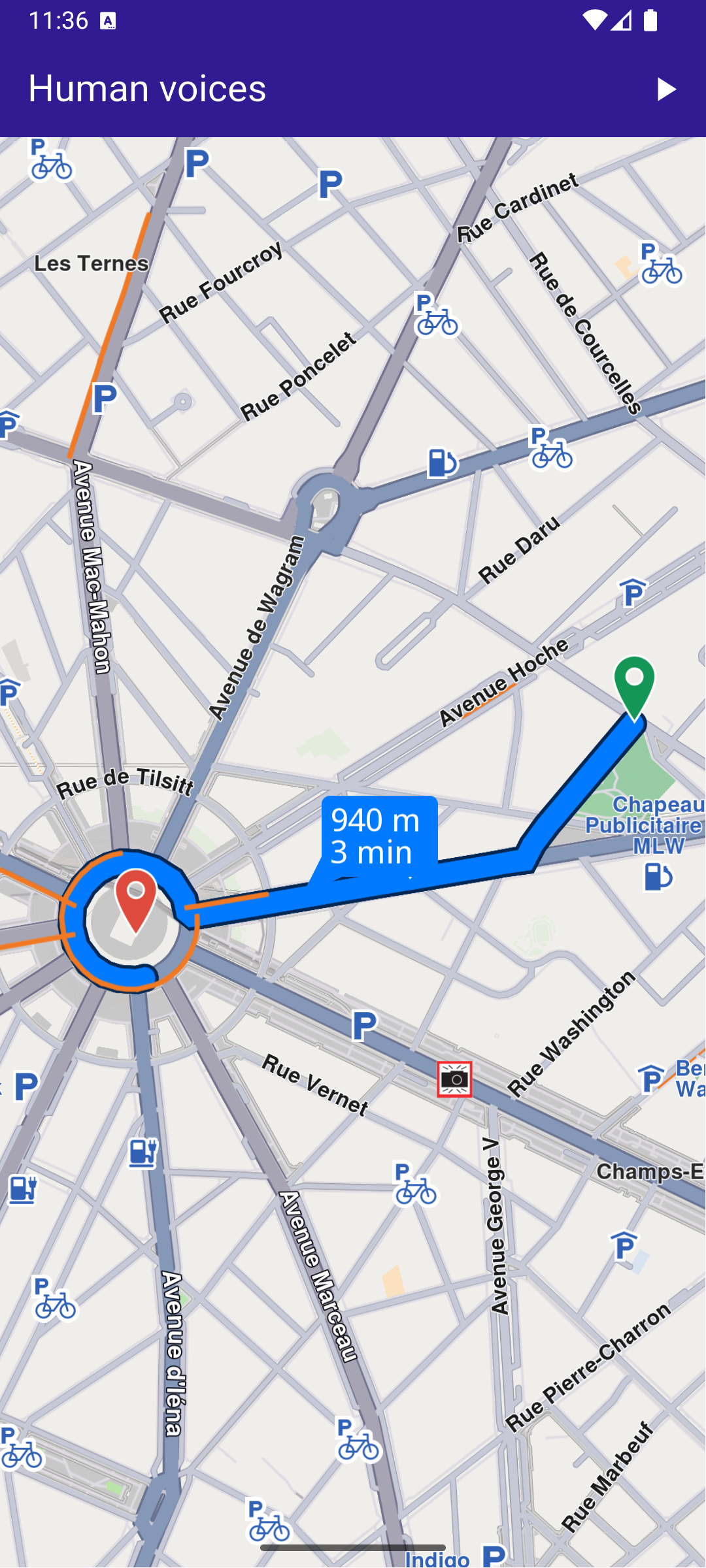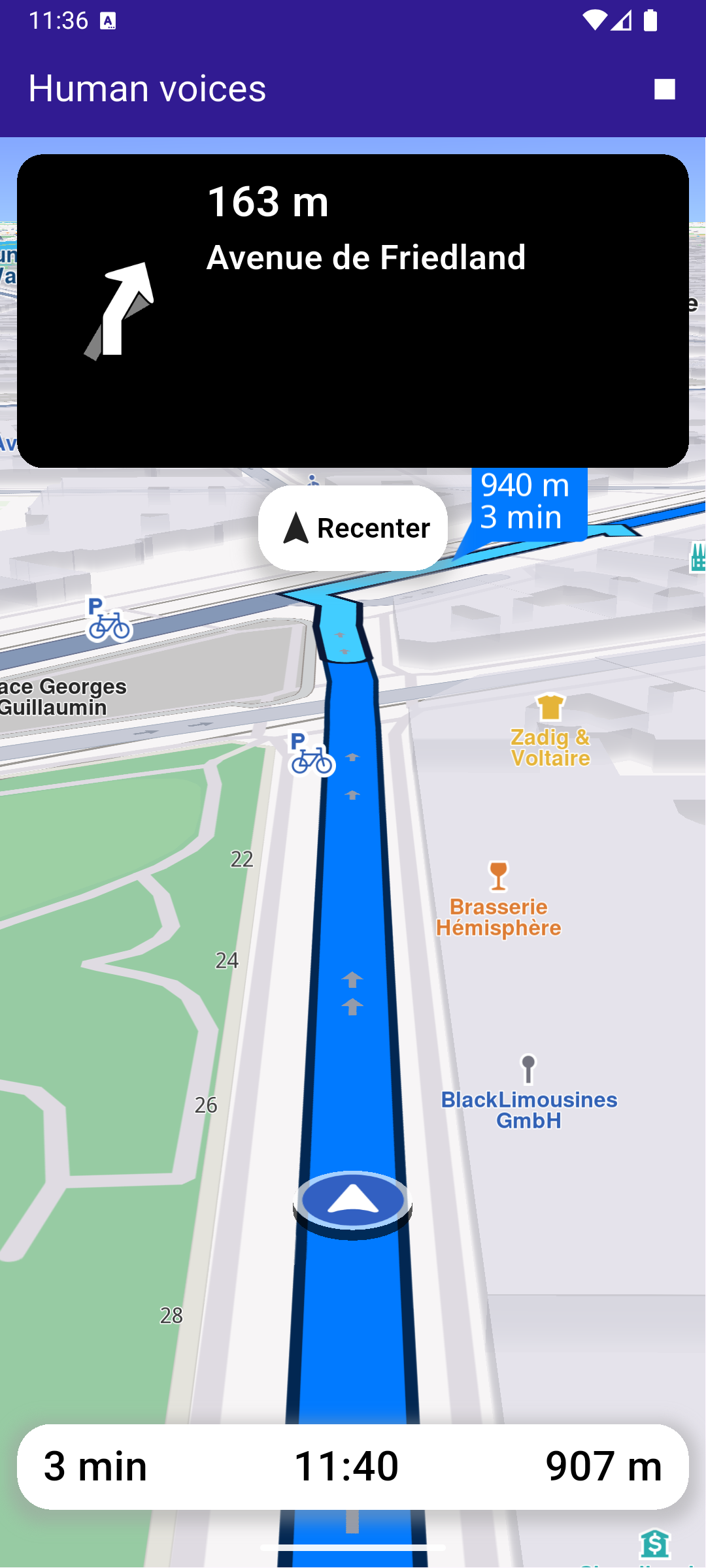Human voices
This example demonstrates the functionalities of the Maps SDK for Flutter, including route calculation, simulation of navigation, and voice instructions.
How it works
This example integrates several components to simulate navigation with voice instructions. Here’s a breakdown of the key functionalities:
- Calculate routes based on user-defined landmarks and route preferences.
- Simulate navigation along a calculated route with real-time text-to-speech (TTS) instructions.
- Display and center routes on the map, with the camera following the simulated position.
Apply Human Voice
Before the navigation has started, select an available human voice to play the instructions.
Route Calculation
The user can trigger route calculation, which involves defining landmarks and preferences, then using RoutingService.calculateRoute to compute the route.
Simulated Navigation
Once the route is built, the user can start the navigation simulation. The simulation triggers instructions play using the included human voices.
The canPlaySounds flag controlls if the SDK should automatically play TTS instructions using the selected voice.


